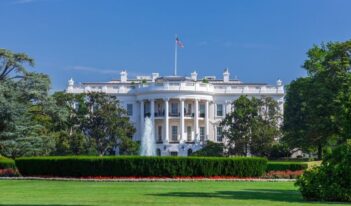
Experts debate reforming the National Environmental Policy Act.
On his first day in office, President Donald J. Trump signed Executive Order 14154, titled “Unleashing American Energy.” Among other directives, Executive Order 14154 prioritizes reform of the National Environmental Policy Act of 1969 (NEPA) in the administration’s energy policy.
NEPA requires federal agencies to prepare an Environmental Impact Statement before taking any major action that might significantly affect the human environment. Although NEPA does not specify the appropriate level of detail for an Environmental Impact Statement, courts apply the key statutory terms—“major,” “significantly,” and “human environment”—broadly.
NEPA provides procedural, rather than substantive, environmental protections. If an agency considers all significant environmental impacts, it may proceed—even if the assessed harm to the environment is severe.
U.S. citizens may bring a NEPA challenge under the Administrative Procedure Act. A court may find an Environmental Impact Statement arbitrary and capricious if it fails to meet NEPA’s procedural requirements.
The impact of NEPA, a five-page law waxing “more poetic than legalistic,” far exceeded initial expectations. NEPA litigation can delay government actions with harmful or poorly understood effects on the environment. Because permit approval constitutes government action, NEPA challenges apply to any private projects requiring a federal permit.
Federal agencies may revise and resubmit Environmental Impact Statements, but the process takes substantial time and resources. Over time, the threat of litigation has led agencies to prepare ever-more detailed statements.
Some policymakers argue that NEPA slows the development of energy projects, housing, and infrastructure in the United States by creating excessive red tape. Critics point to the growing length of Environmental Impact Statements and claim that cost and length of litigation allow a sufficiently determined plaintiff to use NEPA to block economically and socially beneficial projects.
But supporters of NEPA argue that the government should look before it leaps: When taking actions that might harm public goods—including clean water, breathable air, and other uncontroversial necessities—potential effects should first be understood and disclosed to the public. Recent studies also suggest that NEPA may not play a primary role in permitting delays.
Proponents and critics agree that more information is sorely needed.
During the Biden Administration, many renewable energy supporters argued for NEPA reform to accelerate the clean energy transition—breaking with the longstanding anti-reform position held by the environmental movement. Under a Trump Administration committed to privileging fossil energy over clean energy development, bipartisan NEPA reform appears unlikely.
Unilateral NEPA reform, however, has already begun. This February, the Trump Administration took its first significant action on NEPA reform. As directed by Executive Order 14154, the Council on Environmental Quality—the executive division responsible for NEPA coordination and compliance among agencies—published an interim final rule rescinding almost fifty years of NEPA implementing regulations. The interim rule gives federal agencies one year to develop replacement regulations for NEPA implementation consistent with administration priorities set in Executive Order 14154.
In this week’s Saturday seminar, scholars consider the effects of NEPA and propose possible reforms.
- In an article in the Environmental Law Reporter, David E. Adelman, Sommer Engels, Andrew Mergen, and Jamie Pleune argue that the tendency among policymakers to blame NEPA overlooks other regulatory and procedural factors that significantly contribute to project delays. Federal environmental laws are not the primary cause of delays, Adelman and his coauthors note, as many permits can be avoided or obtained through streamlined processes. Litigation rarely challenges development, the authors explain, and most opposition occurs locally. Adelman and his coauthors conclude that project delays stem primarily from resource shortages, inexperienced staff, and coordination challenges at the state and federal levels.
- In an article in the Emory Law Journal, B. Ruhl of Vanderbilt University Law School and James Salzman of the University of California, Los Angeles School of Law explore the tension between laws designed to protect ecosystems and the need to respond to climate change. Meeting ambitious climate goals, Ruhl and Salzman argue, requires rapid infrastructure development. Existing environmental laws, including NEPA, impede necessary climate projects, Ruhl and Salzman contend. In response, Ruhl and Salzman propose creating an independent commission to prioritize key projects, centralize federal permitting authority—including through federal preemption—and expedite approval timelines. Although trade-offs are unavoidable, Ruhl and Salzman conclude that the urgency of climate change may require prioritizing speed and impact over conservation.
- In a policy brief for the Brookings Institution’s Center on Regulation and Markets, Rayan Sud and Sanjay Patnaik of the Brookings Institution and Robert Glicksman of the George Washington University Law School argue that clean-energy permitting can be streamlined while maintaining federal environmental safeguards. Sud, Patnaik, and Glicksman note that lengthy and complex permitting regimes greatly hinder clean-energy projects. Sud, Patnaik, and Glicksman propose major areas for reform, including planning and programmatic review, staffing and funding for permitting agencies, and multi-agency coordination. A balanced approach to permit reform, Sud, Patnaik, and Glicksman conclude, is the rare climate policy that could secure broad bipartisan support.
- In a paper posted to SSRN, David E. Adelman, professor of law at The University of Texas at Austin, argues that concerns that federal environmental laws such as NEPA are impeding climate action are overblown. Adelman notes that virtually all political or litigation challenges to solar and wind infrastructure development occur at the state level. Ninety-five percent of energy infrastructure projects between 2010 and 2021 avoided federal regulation or faced only streamlined administrative review processes, he notes. Moreover, Adelman writes that the increasing number of wind and solar projects is unlikely to overwhelm the capacity of federal agencies already accustomed to reviewing a huge volume of permit applications.
- In an article, Alec Stapp and Brian Potter of the Institute for Progress examine the implications of the historical dominance of procedural laws such as NEPA in federal environmental regulation. Stapp and Potter argue that procedural requirements can be misused to delay projects, impeding the infrastructure development necessary to increase climate resilience. Stapp and Potter contrast the open-ended delays caused by procedural environmentalism with the targeted effectiveness of substantive regulations, such as efforts to close the ozone hole or limit acid rain. Stapp and Potter call for the reform of procedural environmental laws to ensure they do not slow necessary climate action.
- In a recent whitepaper, Eric G. Biber and Daniel A. Farber of the University of California, Berkeley School of Law consider the application of proximate cause principles to NEPA review by litigants in Seven County Infrastructure Coalition v. Eagle County, Colorado, a case recently argued before the Supreme Court. Biber and Farber argue that the petitioners’ attempt imposes artificial constraints on the range of environmental effects agencies must consider. Biber and Farber acknowledge that proximate cause principles may have some bearing on NEPA analysis. Biber and Farber conclude, however, that NEPA’s statutory purpose—ensuring informed decision-making—supports a broad, foreseeability-based approach rather than the rigid geographic or temporal limits proposed by the petitioners.
The Saturday Seminar is a weekly feature that aims to put into written form the kind of content that would be conveyed in a live seminar involving regulatory experts. Each week, The Regulatory Review publishes a brief overview of a selected regulatory topic and then distills recent research and scholarly writing on that topic.



